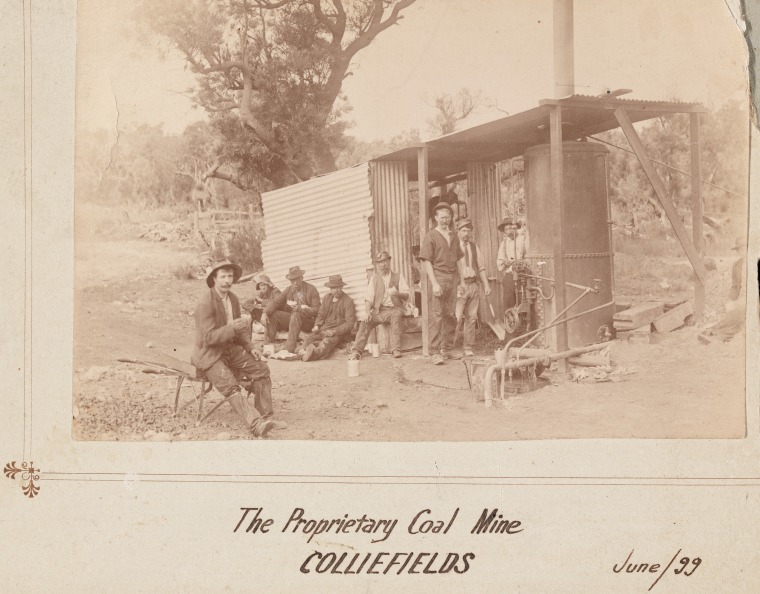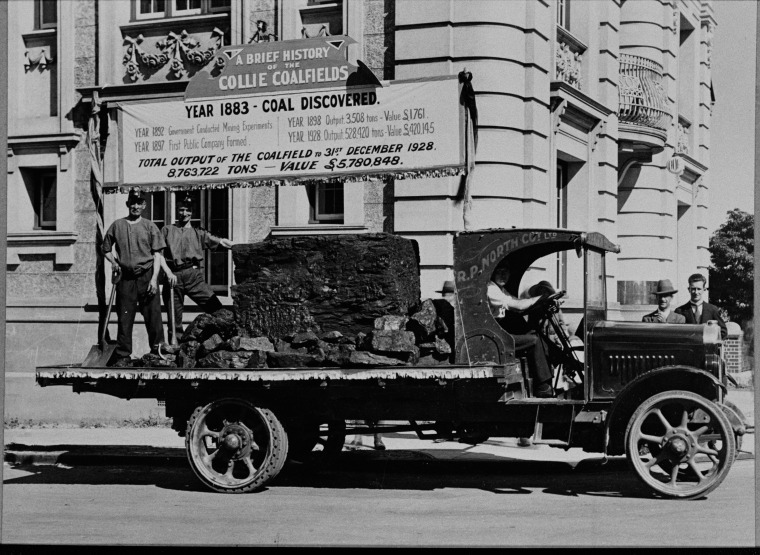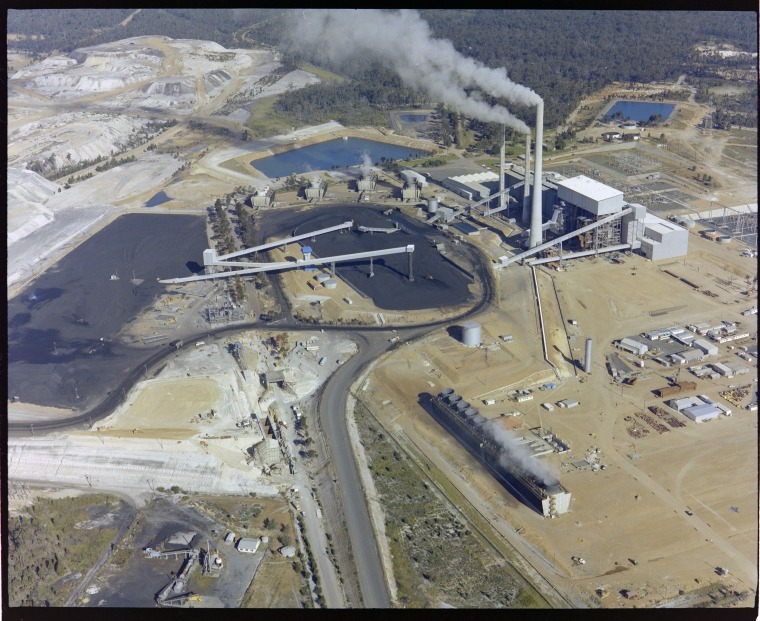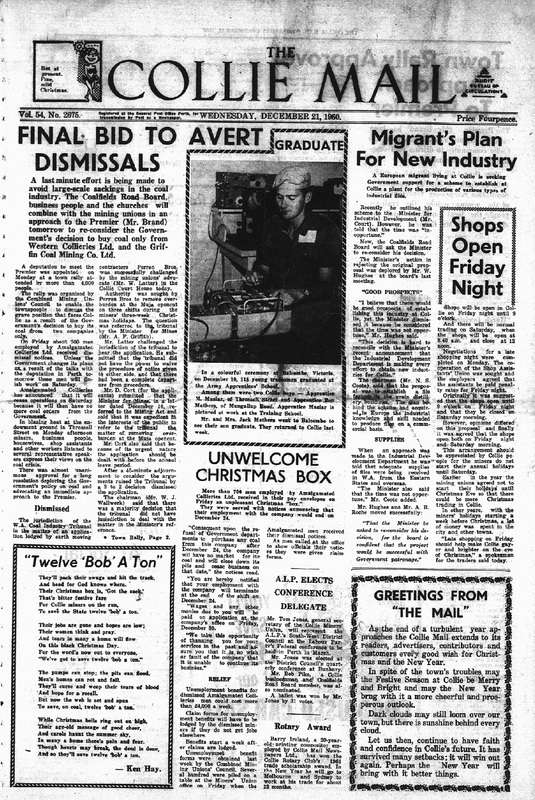Coal
Although coal was first discovered in Western Australia in 1846, the major discovery was in the Collie Basin in 1883. The Collie Coal Mining District was declared in 1896 and production began in 1898 when the railway extended to Collie.
The local market for coal was limited and the small producers at Collie struggled to survive. A local coal industry, however, was vital to the new state’s development, including supporting Western Australia's early rail system.
From 1900 to 1920 coal mining in Western Australia was carried out by various small companies operating mines around Collie.
By 1920, coal mining had increased from 120,000 to 470,000 tonnes. The industry employed over 800 men, yet the small companies struggled to survive. In 1920 Amalgamated Collieries Company of WA Ltd was formed to acquire all existing coal mining companies to establish a monopoly. The state government then awarded them a contract to supply all their coal needs, mainly for the railways.
Local businessmen, prospectors, and miners established Griffin Coal Mining Ltd in 1927. It operated as a small company for many years and survived the Depression of the 1930s. From 1930 to 1935 coal prices remained relatively stable, only dropping 25%, while overall production continued at a similar level.
During World War II, the industry rebounded as coal prices rose, however companies struggled to meet the increased demand for coal. Employment in the coal industry peaked in 1955 with nearly 1,400 miners working in the Collie Basin.
The price of coal remained high and the industry was unable to meet demand. In 1960, in an effort to reduce prices, the state government awarded the contract for the supply of coal to Griffin Collieries and Western Collieries.
Throughout the 1960s and 1970s improved techniques increased mining productivity and volume of coal extracted. This meant fewer people being employed in the industry. From 1960, underground mining used new techniques, employing scraper loaders and a coal blasting system which shot coal off the coal face.
By the late 1990s, underground mining occurred at depths of 150-500m. The coal seam was reached by vertical shafts or sloping tunnels and coal was extracted using continuous miners or longwall equipment.
The coal industry in the early 2000s was significant; it directly employed 1200 people and indirectly employed 1000 people in power generation and supply industries.
Since 2009, Western Australia produces coal from two mines at Collie - Premier and Ewington. Most of the coal produced is used in Synergy power stations, located at Muja and Collie, and the remainder in industrial processing for resources like mineral sands and bauxite.
One of the major Western Australian coal producers, Premier (formerly Western Collieries), reported that from 1950 to 2016, the company had produced over 100,000,000 tonnes of coal.






